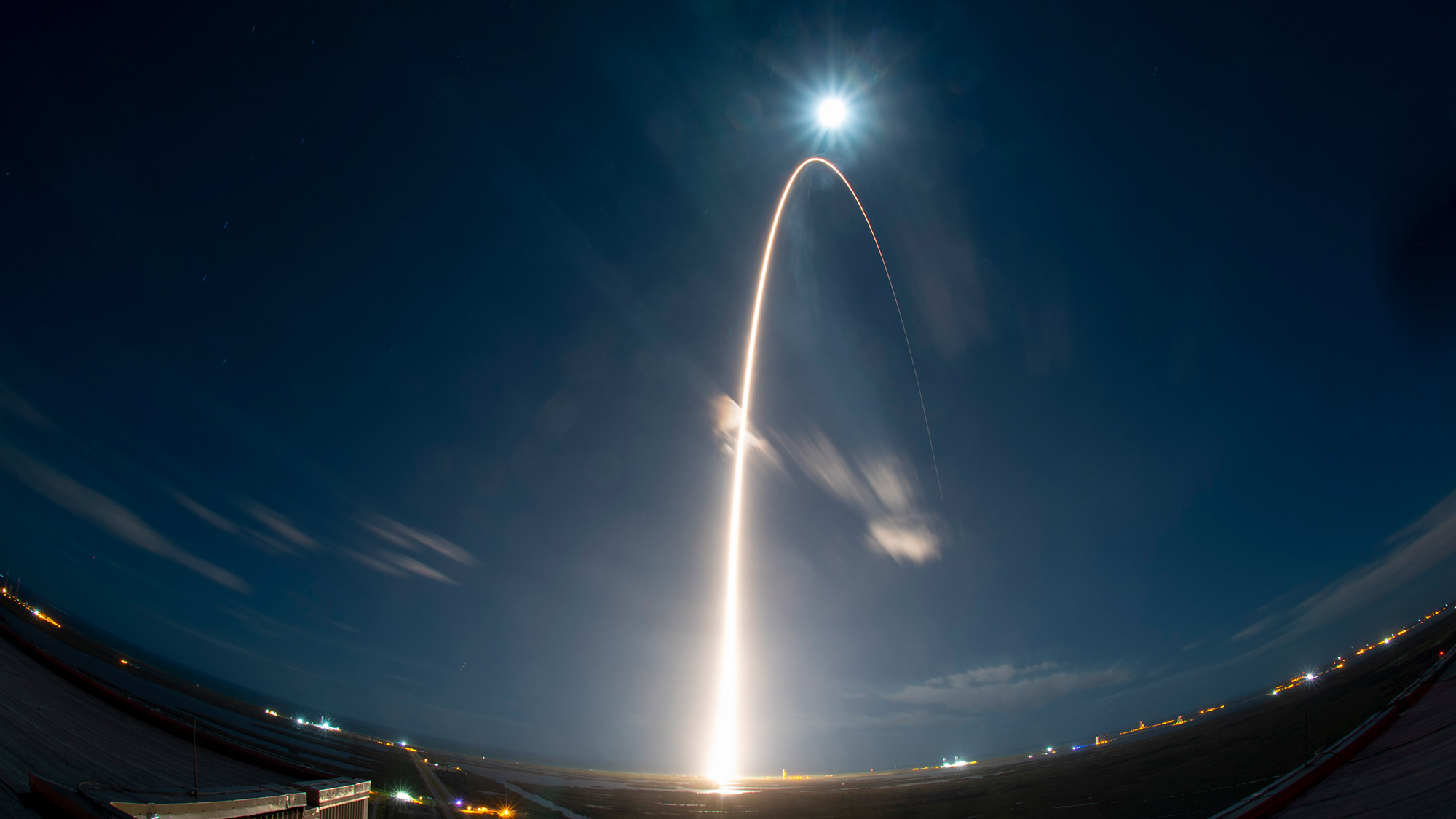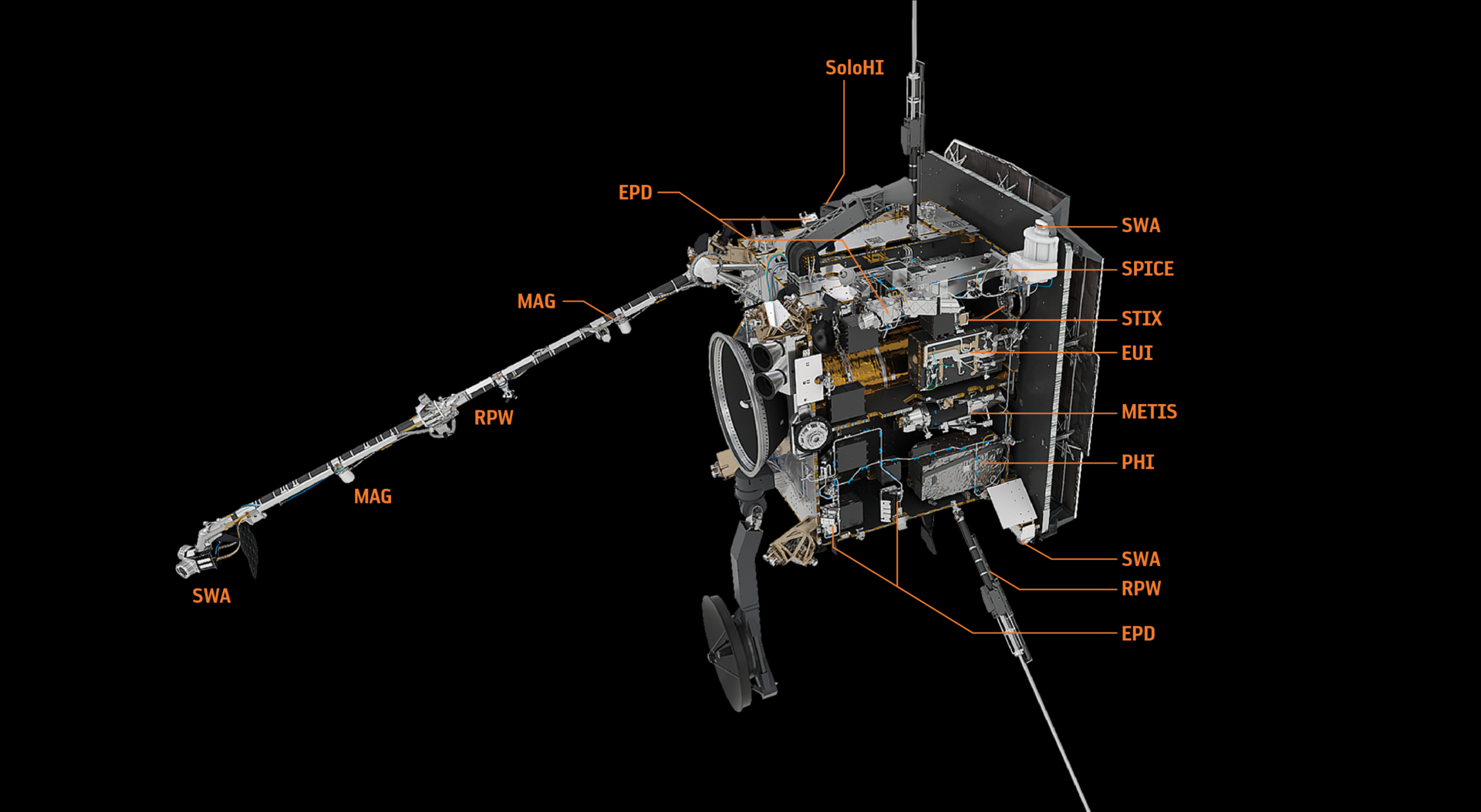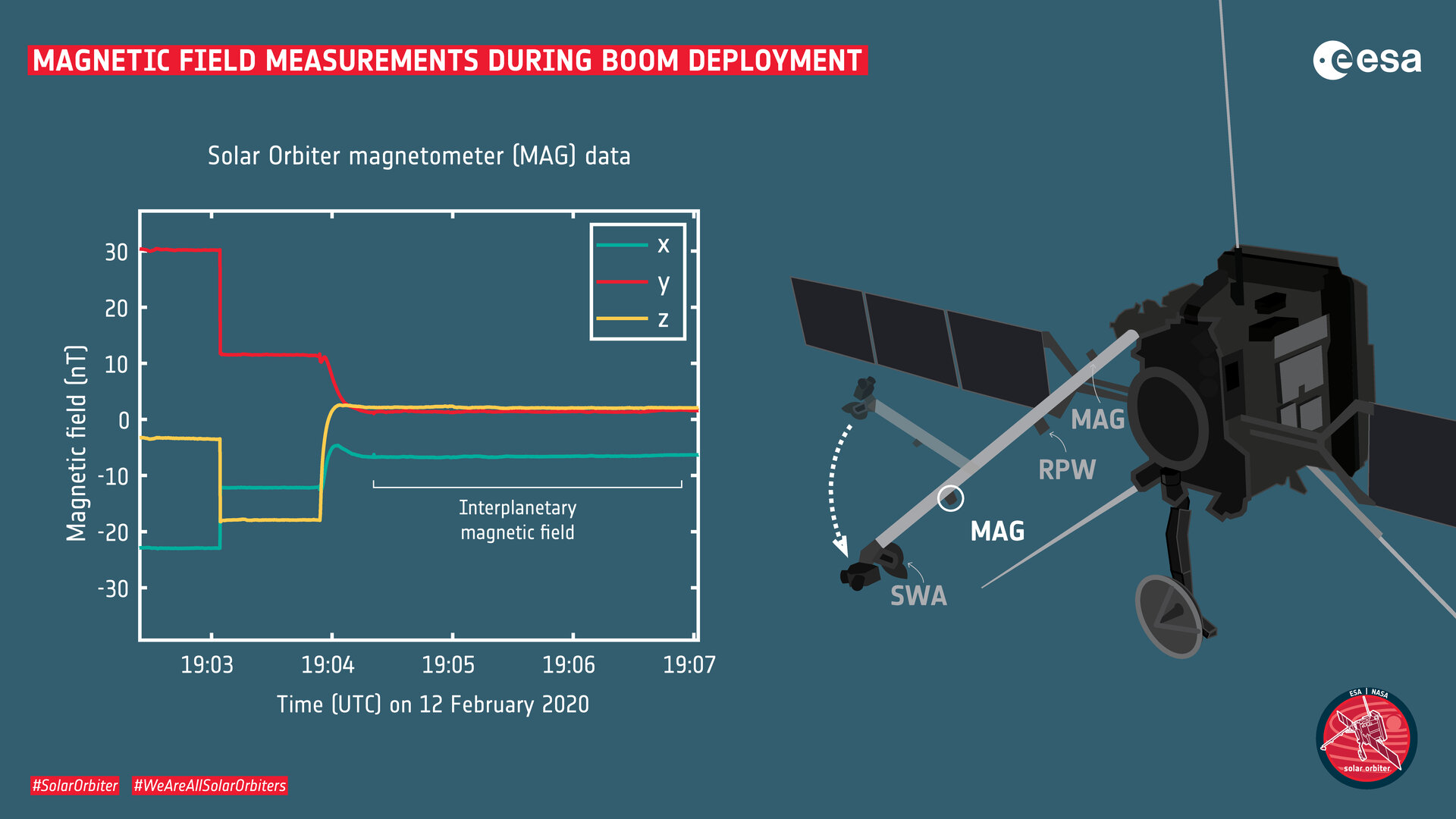See the new Solar Orbiter's 1st space measurements (and an awesome video)
The European Space Agency's Solar Orbiter has sent back its first measurements from space, confirming the successful deployment of the boom that carries many of its sun-gazing instruments.
The Solar Orbiter — a joint mission led by NASA and the European Space Agency (ESA) — launched on Feb. 9 atop a United Launch Alliance (ULA) Atlas V rocket. Since then, ESA has shared two incredible views of its departure. Cameras on the rocket captured amazing footage of the launch and deployment of the orbiter, and researchers using the Schmidt telescope at Calar Alto in Spain spied the orbiter streaking across the night sky just 20 hours after launch.
The Solar Orbiter is equipped with 10 scientific instruments, including tools to measure the electromagnetic characteristics of the solar wind, the stream of charged particles flowing from the sun. Sensors for some of the instruments are located on the spacecraft's 14-foot (4.4 meter) boom, which was deployed on Feb. 12, according to a statement from ESA.
Related: Solar Orbiter: The US-European mission to explore the sun in photos

"We measure magnetic fields thousands of times smaller than those we are familiar with on Earth," Tim Horbury, principal investigator for the magnetometer (MAG) instrument on the Solar Orbiter, said in the statement. "Even currents in electrical wires make magnetic fields far larger than what we need to measure. That's why our sensors are on a boom, to keep them away from all the electrical activity inside the spacecraft."
The MAG instrument measures the strength and direction of the magnetic field around the spacecraft. It was the first instrument to send back data from space, on Feb. 13, showing measurements of the space environment before, during and after the deployment of the boom.
"The data we received shows how the magnetic field decreases from the vicinity of the spacecraft to where the instruments are actually deployed," Horbury said in the statement. "This is an independent confirmation that the boom actually deployed and that the instruments will, indeed, provide accurate scientific measurements in the future."
Get the Space.com Newsletter
Breaking space news, the latest updates on rocket launches, skywatching events and more!

The boom, a titanium and carbon-fiber pole that houses three instruments, needs to be kept far from the main spacecraft due to the instruments' sensitivity to electromagnetic disturbances. The spacecraft deployed the boom during a 30-minute period. The two MAG sensors were turned on before the boom deployment, when they captured the magnetic field of the spacecraft. However, after the boom was fully extended, the data showed that the magnetic field in the surrounding environment is significantly weaker.
"Measuring before, during, and after the boom deployment helps us to identify and characterize signals that are not linked to the solar wind, such as perturbations coming from the spacecraft platform and other instruments," Matthieu Kretzschmar, lead co-investigator of the high frequency magnetometer of the Radio and Plasma Waves instrument (RPW) instrument, which is also located on the boom.
The RPW instrument will study characteristics of electromagnetic and electrostatic waves in the solar wind. Three antennas of the RPW were also successfully deployed on Feb. 13. However, scientists haven't yet analyzed data from that maneuver, according to the statement.
The Solar Orbiter also carries six remote-sensing instruments that scientists will use to capture images of the sun's visible surface at various wavelengths. Mission personnel will continue to test and calibrate the spacecraft's instruments through the end of April, before beginning to collect scientific data by mid-May.

"The 10 instruments onboard our mission will be playing together like instruments in an orchestra," Daniel Müller, ESA Solar Orbiter project scientist, said in the statement. "We have just started the rehearsal, and one by one, additional instruments will join. Once we are complete, in a few months' time, we will be listening to the symphony of the sun."
The spacecraft is currently on its way to the sun and will rely on several gravity-assist maneuvers at Earth and Venus along the way.
The first 83 hours after launch were critical for the Solar Orbiter, as ground control worked to establish communication with the spacecraft, confirm its position and verify its systems were working correctly.
The team started to wake up the orbiter by extending its solar arrays, engaging the reaction wheels, which control the spacecraft's orientation, and turning on its mass memory, which stores data collected by the science instruments.
"This early phase is like the birth of a child," Andrea Accomazzo, operations director at ESA, said in a statement from Feb. 14. "Engineers want to be sure that it can survive on its own in its new environment. In the case of a spacecraft, they need it to be powered by its solar arrays, able to communicate with Earth, and able to control its orientation in space."
- Inside the clean room with Solar Orbiter (photos)
- Solar quiz: How well do you know our sun?
- What's inside the sun? A star tour from the inside out
Follow Samantha Mathewson @Sam_Ashley13. Follow us on Twitter @Spacedotcom and on Facebook.
OFFER: Save at least 56% with our latest magazine deal!
All About Space magazine takes you on an awe-inspiring journey through our solar system and beyond, from the amazing technology and spacecraft that enables humanity to venture into orbit, to the complexities of space science.
Join our Space Forums to keep talking space on the latest missions, night sky and more! And if you have a news tip, correction or comment, let us know at: community@space.com.

Samantha Mathewson joined Space.com as an intern in the summer of 2016. She received a B.A. in Journalism and Environmental Science at the University of New Haven, in Connecticut. Previously, her work has been published in Nature World News. When not writing or reading about science, Samantha enjoys traveling to new places and taking photos! You can follow her on Twitter @Sam_Ashley13.

